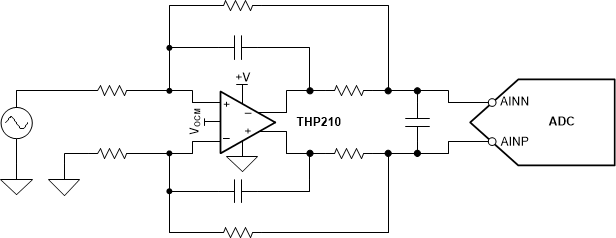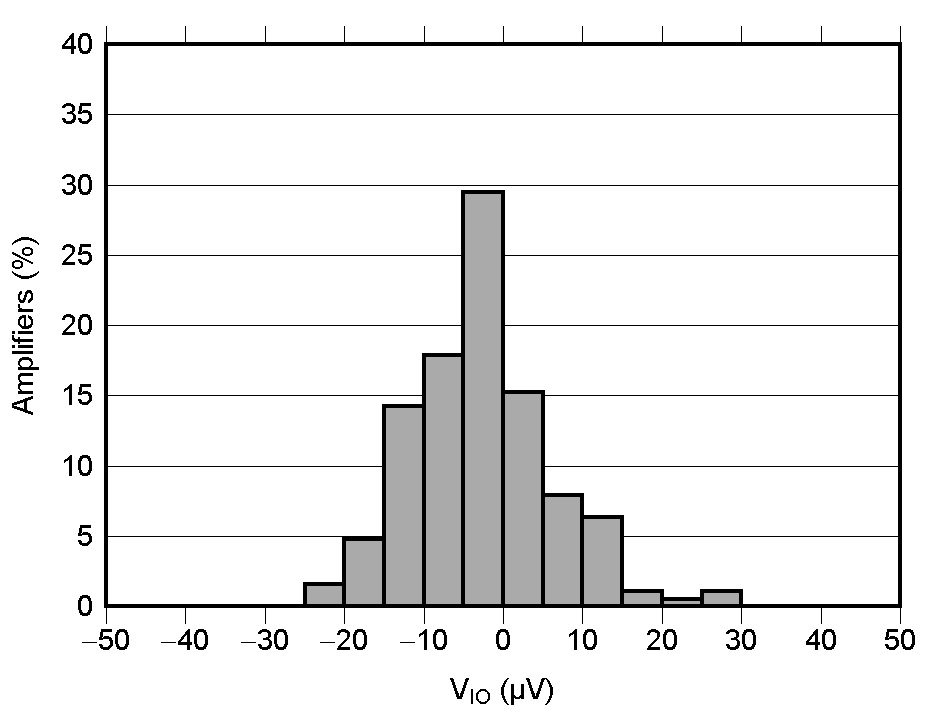SBOS932C January 2020 – March 2021 THP210
PRODUCTION DATA
- 1 Features
- 2 Applications
- 3 Description
- 4 Revision History
- 5 Pin Configuration and Functions
- 6 Specifications
- 7 Parameter Measurement Information
- 8 Detailed Description
-
9 Application and Implementation
- 9.1 Application Information
- 9.2 Typical Applications
- 10Power Supply Recommendations
- 11Layout
- 12Device and Documentation Support
- 13Mechanical, Packaging, and Orderable Information
Package Options
Mechanical Data (Package|Pins)
Thermal pad, mechanical data (Package|Pins)
- DGK|8
Orderable Information
3 Description
The THP210 is an ultra-low-offset, low-noise, high-voltage, precision, fully differential amplifier that easily filters and drives fully differential signal chains. The THP210 is also used to convert single-ended sources to differential outputs as required by high-resolution analog-to-digital converters (ADCs). Designed for exceptional offset, low noise and THD, the bipolar super-beta inputs yield a very-low noise figure at very-low quiescent current and input bias current. This device is designed for signal conditioning circuits where low power offset and power consumption are required, along with excellent signal-to-noise ratio (SNR).
The THP210 features high-voltage supply capability, allowing for supply voltages up to ±18 V. This capability allows high-voltage differential signal chains to benefit from the improved headroom and dynamic range without adding separate amplifiers for each polarity of the differential signal. Very-low voltage and current noise enables the THP210 for use in high-gain configurations with minimal impact to the signal fidelity.
| PART NUMBER | PACKAGE | BODY SIZE (NOM) |
|---|---|---|
| THP210 | VSSOP (8) | 3.00 mm × 3.00 mm |
| SOIC (8) | 4.90 mm x 3.91 mm |
 Precision, Low-Noise,
Low-Power, Fully-Differential Amplifier Gain Block and Interface
Precision, Low-Noise,
Low-Power, Fully-Differential Amplifier Gain Block and Interface Low Input Voltage
Offset
Low Input Voltage
Offset